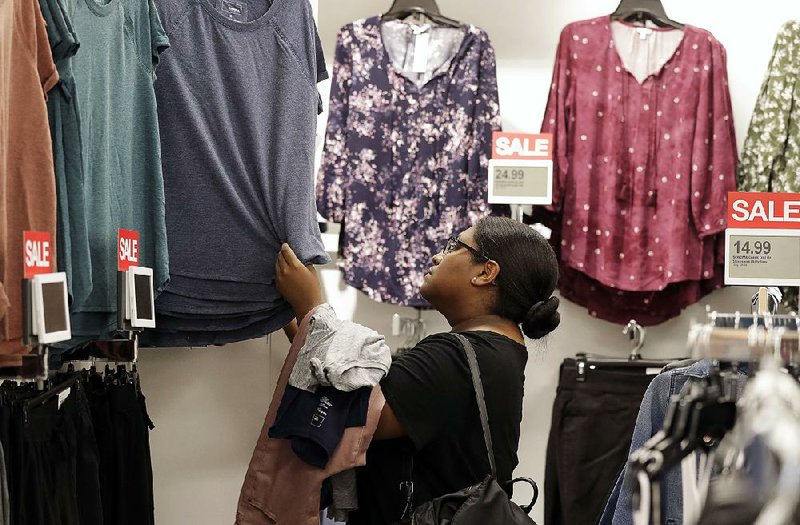WASHINGTON -- U.S. retail sales barely rose in August as consumers slowed their spending after a robust month of shopping in July.
The Commerce Department said Friday that the value of purchases ticked up just 0.1 percent last month, the smallest increase in six months. But the sluggish figure could prove only a temporary blip. It partly reflected falling prices for items like clothing, and it followed a strong gain of 0.7 percent in July.
Combined results from July and August indicate support from a strong job market and more after-tax pay during the back-to-school shopping season. While household spending, the biggest part of the economy, continues to drive economic growth this quarter, still-tepid pay gains and higher borrowing costs are among reasons why it's projected to cool from its second-quarter pace.
With the revisions to July, "the net result is fairly strong spending growth so far" in the quarter, Jim O'Sullivan, chief U.S. economist at High Frequency Economics Ltd., said in a research note.
Consumer confidence soared to the highest level in 18 years in August as Americans expressed a more optimistic outlook on economic growth. That suggests that retail sales could rebound in the coming months.
Still, auto sales fell 0.8 percent last month, the most since February, after decreasing 0.1 percent in the previous month. According to industry reports for August, except Ford, all major automakers' sales missed analyst estimates as demand plunged for passenger cars.
Clothing stores sales plunged 1.7 percent, the steepest drop in 18 months, though that figure mostly reflected lower-priced clothing rather than declining demand.
Retail sales are closely monitored by economists because they provide an early read on consumer spending, which drives about two-thirds of economic activity.
Sales at gas stations jumped 1.7 percent, an increase that reflected higher prices at the pump. Excluding gas stations, retail sales slipped 0.1 percent, the first decline since January.
Sales increased at electronics and appliance stores, sporting goods stores, restaurants and bars, and a category that includes online and catalog retailers. Online and catalog sales have jumped 10.4 percent compared with a year earlier, a much larger increase than the 6.6 percent rise in overall sales.
Retailers expect a solid winter holiday shopping season and are announcing plans to increase their hiring of seasonal staff. Target said this week that it plans to hire 120,000 temporary workers, 20 percent more than last year.
The economy expanded at a robust 4.2 percent annual rate in the April-June quarter, the strongest growth in four years. That growth was lifted by solid consumer spending, which increased 3.8 percent.
Analysts forecast growth will slip in the current July-September quarter to a still-healthy 3 percent annual pace.
Information for this article was contributed by Christopher Rugaber of The Associated Press and by Shobhana Chandra of Bloomberg News.
Business on 09/15/2018
